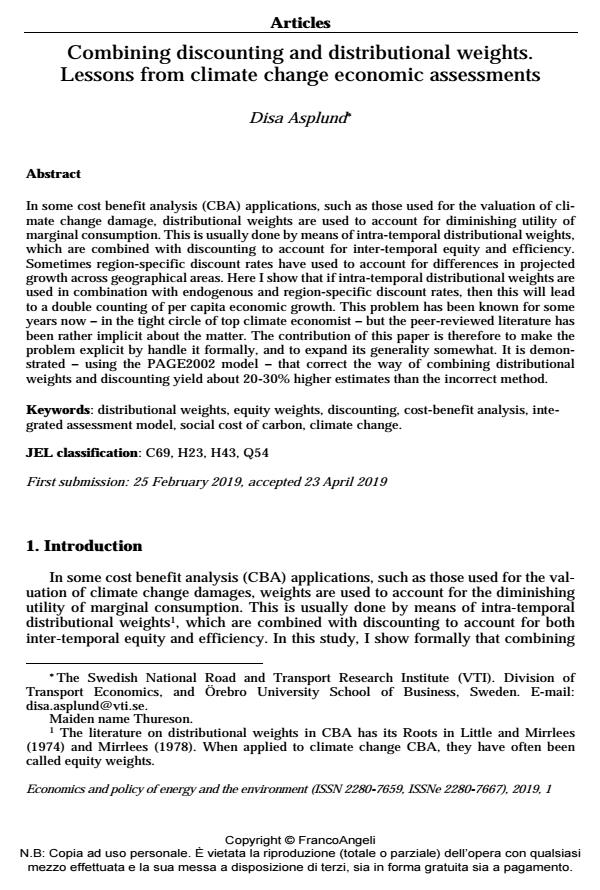Combining discounting and distributional weights. Lessons from climate change economic assessments
Journal title ECONOMICS AND POLICY OF ENERGY AND THE ENVIRONMENT
Author/s Disa Asplund
Publishing Year 2019 Issue 2019/1
Language English Pages 21 P. 181-201 File size 228 KB
DOI 10.3280/EFE2019-001012
DOI is like a bar code for intellectual property: to have more infomation
click here
Below, you can see the article first page
If you want to buy this article in PDF format, you can do it, following the instructions to buy download credits

FrancoAngeli is member of Publishers International Linking Association, Inc (PILA), a not-for-profit association which run the CrossRef service enabling links to and from online scholarly content.
In some cost benefit analysis (CBA) applications, such as those used for the valuation of climate change damage, distributional weights are used to account for diminishing utility of marginal consumption. This is usually done by means of intra-temporal distributional weights, which are combined with discounting to account for inter-temporal equity and efficiency. Sometimes region-specific discount rates have used to account for differences in projected growth across geographical areas. Here I show that if intra-temporal distributional weights are used in combination with endogenous and region-specific discount rates, then this will lead to a double counting of per capita economic growth. This problem has been known for some years now - in the tight circle of top climate economist - but the peer-reviewed literature has been rather implicit about the matter. The contribution of this paper is therefore to make the problem explicit by handle it formally, and to expand its generality somewhat. It is demonstrated - using the PAGE2002 model - that correct the way of combining distributional weights and discounting yield about 20-30% higher estimates than the incorrect method. .
Keywords: Distributional weights, equity weights, discounting, cost-benefit analysis, integrated assessment model, social cost of carbon, climate change
Jel codes: C69, H23, H43, Q54
- Synthesis of Evidence Yields High Social Cost of Carbon Due to Structural Model Variation and Uncertainties Frances C. Moore, Moritz A. Drupp, James Rising, Simon Dietz, Ivan Rudik, Gernot Wagner, in SSRN Electronic Journal /2024
DOI: 10.2139/ssrn.4868734
Disa Asplund, Combining discounting and distributional weights. Lessons from climate change economic assessments in "ECONOMICS AND POLICY OF ENERGY AND THE ENVIRONMENT" 1/2019, pp 181-201, DOI: 10.3280/EFE2019-001012